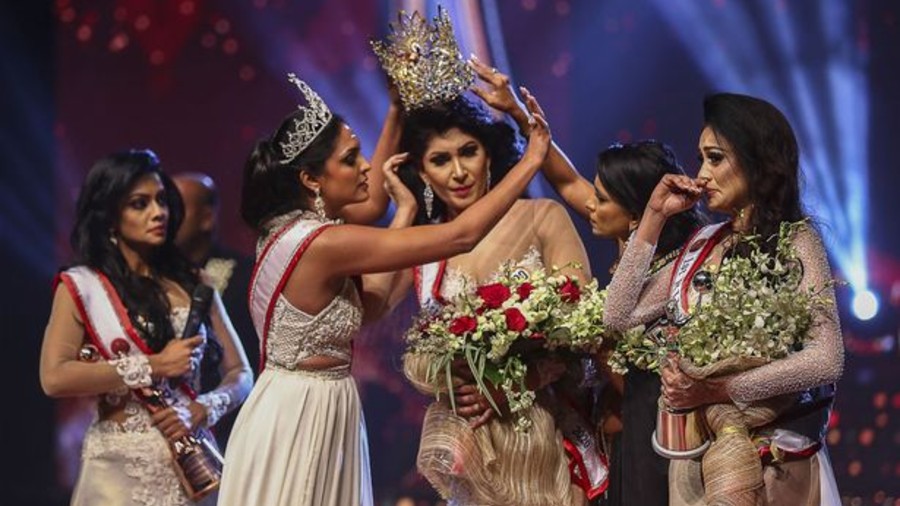Beauty with brains — this is the mantra that beauty pageants across the world have repeated ad nauseam to counter allegations of objectifying women. But the organizers of the Mrs Sri Lanka event may need to tweak this to ‘beauty with brawns’. The latest winner of the title, Pushpika de Silva, will vouch for this. Minutes after she was declared Mrs Sri Lanka, the former holder of the title, Caroline Jurie, yanked the crown off Ms de Silva’s head, accusing her of being a divorcee, and thus ineligible for the title. Happily, things were set straight later with the title being returned to the rightful owner — who put out a statement saying she is separated — and Ms Jurie was arrested. Around the same time in Papua New Guinea, another beauty queen was being stripped of her title because she uploaded a video of herself dancing rather provocatively. Over the years, a variety of gratuitous reasons have been cited to snatch away titles from winners of pageants — these range from hidden marriages and secret pregnancies to leaked nude photographs. One winner of Miss Universe became crownless for being too busy with her school to keep up with the rigorous travel schedule she was required to comply with.
The reasons speak for themselves. For years, pageants barred women who had abortions, and in certain cases, they still mandate that entrants be single and childless. These policies do not reflect a healthy attitude towards personal choice and liberty of women contestants. Rather, they perpetuate societal reservations regarding women’s agency. Beauty pageants serve as a reminder that notions of beauty of the body are to be restricted by the measuring tape and the judge’s assessment and approval of their physical appeal. The evolution of pageantry swimsuit contests from a one-piece bathing suit, to a two-piece bathing suit, to a bikini is a perfect example of how society continues to expose and objectify women’s bodies. The woman’s body is the focal point rather than her identity, skills and intelligence.
Yet, pageants, if conceived imaginatively, can also serve as a symbol of empowerment. In the 1910s, women’s rights activists staged elaborate pageants depicting powerful women throughout history and highlighting the various traits and careers women could aspire to by having participants wear white sashes emblazoned with words such as “Writer” and “Courage”. Suffrage pageants helped popularize the presence of women in the public sphere and made women more comfortable thinking of themselves as agents of change. In recent times, pageants have provided visibility to marginalized communities, including transgender men and women or people of colour. Instead of being critical of these events, perhaps there is a case for using their potential and popularity to challenge and, ultimately, purge deeply entrenched biases.












